Swiss glaciers continue to melt
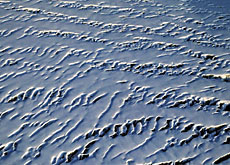
Switzerland's glaciers are continuing to shrink - in some cases at an alarming rate - according to the Glacier Monitoring Service.
Some 121 glaciers are regularly analysed, and almost all of the 64 scrutinised over the 2001/02 period were found to be receding.
Of the 64 studied by the Swiss Academy of Natural Sciences, 58 shrank during the monitoring period, with the worst affected – the Surettagletscher in canton Graubünden – contracting by 94 metres.
Only four of the glaciers studied retained their mass and size, while two actually grew slightly during the period, which ended last autumn.
The rate of recession differs widely from place to place, from as little as six metres for the Mont Durand glacier in canton Valais to the huge loss at the Surettagletscher.
Although worrying, scientists caution that the shrinking in size of glaciers is not automatically an indication of global warming, since they expand and contract as a matter of course.
“Old” snow
The Mont Durand glacier, for example, was expected to shrink because “old” snow that had been building up on the glacier “tongue” had not melted for several years. The tongue of the Surettagletscher, too, was unusually far advanced and was due to recede.
More important, says glacier expert Martin Hoelzle, is a change in the overall mass of the object.
Three glaciers in Switzerland lost mass in the 2001/02 monitoring period – Basòdino in Ticino, Gries in Valais and Silvretta in Graubünden. However, in preceding years they either increased in mass or remained stable thanks to heavier precipitation.
Hoelzle says it typically takes years to conclusively establish that a glacier is shrinking as a result of a warmer climate.
It may take ten years before the tongue of the vast Aletsch glacier in the Bernese Oberland is affected by climate change, he adds.
Climate change
Nevertheless, Hoelzle says the long-term trend is clear: Switzerland’s glaciers are shrinking.
“What we can say is that the glaciers, especially in the Alps, are retreating very fast. They are losing a lot of mass,” he told swissinfo in an earlier interview.
Hoelzle cited the upper Grindelwald glacier in the Bernese Oberland as a prime example.
“Just 15 years ago the ice came right down to the trees,” he said. “Now we have to climb 980 steps up the rock to reach it. In 1850, you could see the glacier from the village of Grindelwald itself. As it crept down, it knocked over trees in its path.”
Hoelzle has no doubt that climate change is responsible for the glaciers’ retreat. But it is not proven that human activity is responsible.
Human activity
“It is certain that the climate is changing, and getting warmer,” he said. “What’s more difficult to say is whether human activity is responsible. But there is very strong evidence to show that what we do is at least partially to blame.”
So could alpine glaciers disappear altogether? Martin Hoelzle thinks this is unlikely. “Certainly a major glacier like the Aletsch glacier will survive the 21st century,” he said. “Nevertheless its retreat is dramatic; it has lost around 2.5 square kilometres since 1815 – this is a huge loss of mass.”
Consequences
The consequences of shrinking glaciers could be severe. “In central Asia glaciers are the primary source of fresh water in summer,” said Hoelzle.
“If they carry on shrinking, the reduced supply could cause serious drought. And here in Switzerland they supply the hydro-electric power stations with water in summer, so here too we could have problems.”
But what worries Hoelzle most is what the glaciers’ retreat is telling us about the state of the world’s climate.
“The glaciers are an indicator of climate change. If they are shrinking it means the climate is changing. And that means our entire environment and weather system will change, with possibly very severe consequences, such as increased storms and flooding.”
swissinfo with agencies
In the 2001/02 monitoring period, 58 of the 64 glaciers studied shrank.
Four stayed the same size, while two grew.
The long-term trend shows alpine glaciers are retreating fast.
Scientists are largely agreed that global warming is a reality, but it is not conclusively proven that humans are responsible.

In compliance with the JTI standards
More: SWI swissinfo.ch certified by the Journalism Trust Initiative
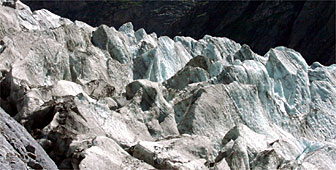
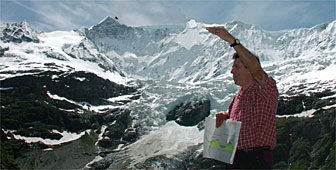
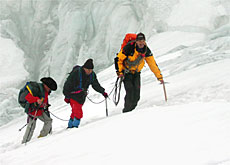
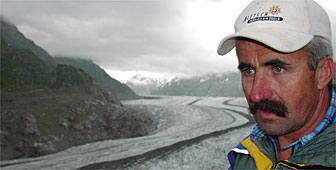
You can find an overview of ongoing debates with our journalists here. Please join us!
If you want to start a conversation about a topic raised in this article or want to report factual errors, email us at english@swissinfo.ch.